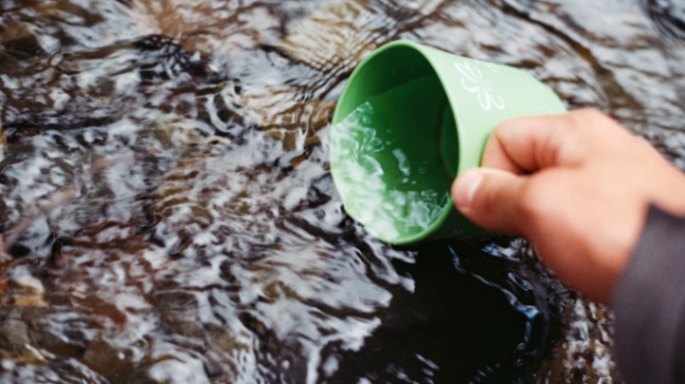As a camper, having access to clean and safe drinking water is crucial for your well-being. It’s no secret that water is a fundamental human need, and when you’re out in the wilderness, there’s no easy way to obtain it. This is why water storage for camping hydration is essential. In this article, we’ll discuss the importance of water storage for camping hydration and explore different ways to store and treat water while on a camping trip.
Why Water Storage is Important for Camping Hydration
When camping, you’re exposed to various environmental factors that can lead to dehydration, such as hot weather, high altitude, and physical activity. In such scenarios, staying hydrated is crucial to avoid heat exhaustion, heatstroke, and other heat-related illnesses. Additionally, having a reliable water storage system allows you to carry sufficient water to sustain you during your camping trip without worrying about finding a water source whenever you need a drink.
Understanding Your Water Needs
Before we delve into the different water storage options, it’s essential to understand your water needs. An adult needs at least 2 liters of water daily to stay hydrated. However, this number can increase depending on physical activity, climate, and altitude. When camping, it’s best to assume that you’ll need more water than usual to account for these factors.
Water Storage Options for Camping
There are several ways to store and treat water while camping. Here are some of the most popular options:
Water Bottles and Hydration Packs
Water bottles and hydration packs are convenient and portable for carrying water while camping. Water bottles are typically made of plastic or stainless steel and come in various sizes and shapes. Hydration packs, on the other hand, are backpacks with a built-in water bladder that allows you to drink water through a hose without stopping and taking out a water bottle. Both options are great for short camping trips with readily available water sources.
Water Containers
Water containers are more significant and sturdier than water bottles, making them ideal for long camping trips where you need more water. They come in various sizes and shapes and are made of plastic, aluminum, and stainless steel. Some water containers come with a spigot, making it easy to dispense water for cooking and washing.
Water Filters and Purifiers
Water filters and purifiers are essential for treating water from natural sources such as lakes, rivers, and streams. Water filters remove impurities such as dirt, sediment, and bacteria, while water purifiers also remove viruses and parasites. Water filters and purifiers range from portable trim options to larger gravity-fed systems.
UV Water Purifiers
UV water purifiers use ultraviolet light to kill bacteria, viruses, and parasites in water. They are lightweight and portable, ideal for backpacking and other outdoor activities. However, they require batteries or a power source to operate and can only treat small amounts of water at a time.
Tips for Storing and Treating Water While Camping
Here are some tips to help you store and treat water while camping:
- Always carry more water than you think you’ll need.
- Treat all water from natural sources before drinking it.
- Store water in a cool, dark place to prevent algae growth.
- Use a water filter or purifier to treat water from natural sources.
- Clean your water storage containers regularly to prevent bacteria growth.
- Label your water containers with the date and time of filling to keep track of freshness.
FAQs
- Can I drink water straight from a natural source while camping?
No, drinking water straight from a natural source is not recommended while camping. Natural sources such as rivers, streams, and lakes can contain bacteria, parasites, and other harmful substances that can cause illness. Always treat natural water sources with a filter or purifier before drinking.
- What should I do if I run out of water while camping?
Run out of water while camping. It would be best to immediately start looking for a water source to replenish your supply. If you cannot find a natural water source, consider melting snow or ice (if available) or seeking help from nearby campsites or hiking trails.
- How often should I clean my water storage containers?
It’s recommended to clean your water storage containers after every camping trip. Use warm, soapy water and a bottle brush to clean the container thoroughly, then rinse with clean water and let dry before storing.
- Can I store water in a metal container?
Yes, you can store water in a metal container, but make sure the container is food-grade and free of rust or other contaminants. Metal containers can also retain heat, so storing them in a cool, shaded area is best.
- How can I ensure my water stays fresh while camping?
Labeling your water containers with the date and time of filling can help you keep track of freshness. Additionally, storing water in a cool, dark place and using a water filter or purifier can help prevent bacteria growth and ensure your water stays fresh for longer.
Conclusion
Water storage for camping hydration is essential for the health and safety of campers. Whether you’re embarking on a short day hike or an extended camping trip, having access to clean and safe drinking water is crucial. By understanding your water needs and choosing the proper water storage and treatment options, you can ensure that you stay hydrated and healthy during your outdoor adventures.
Remember, dehydration can lead to serious health complications. The last thing you want is to cut your camping trip short because of a preventable illness. So, invest in a reliable water storage system, and always prioritize staying hydrated while exploring the great outdoors.
